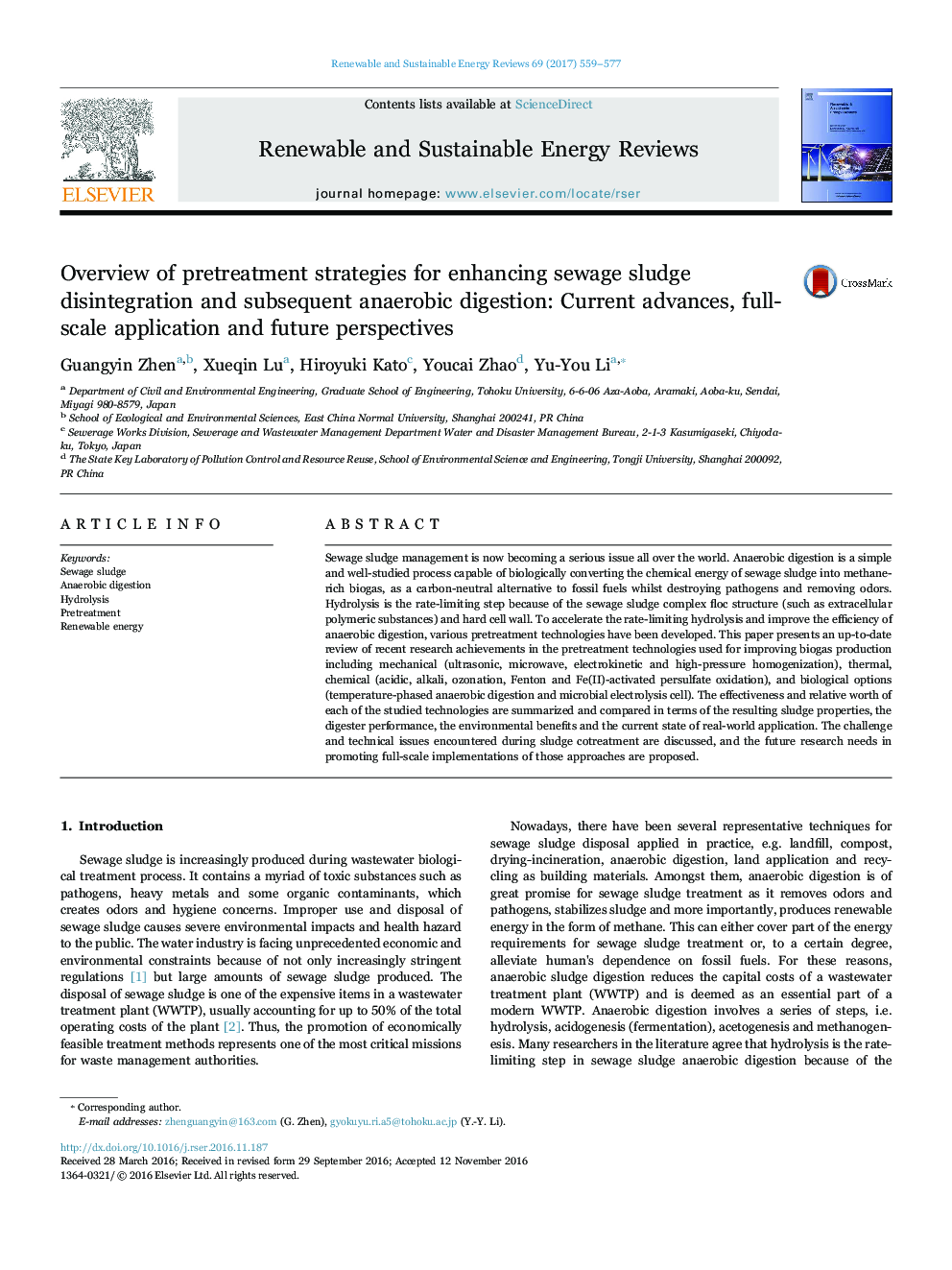| Article ID | Journal | Published Year | Pages | File Type |
|---|---|---|---|---|
| 5483355 | Renewable and Sustainable Energy Reviews | 2017 | 19 Pages |
Abstract
Sewage sludge management is now becoming a serious issue all over the world. Anaerobic digestion is a simple and well-studied process capable of biologically converting the chemical energy of sewage sludge into methane-rich biogas, as a carbon-neutral alternative to fossil fuels whilst destroying pathogens and removing odors. Hydrolysis is the rate-limiting step because of the sewage sludge complex floc structure (such as extracellular polymeric substances) and hard cell wall. To accelerate the rate-limiting hydrolysis and improve the efficiency of anaerobic digestion, various pretreatment technologies have been developed. This paper presents an up-to-date review of recent research achievements in the pretreatment technologies used for improving biogas production including mechanical (ultrasonic, microwave, electrokinetic and high-pressure homogenization), thermal, chemical (acidic, alkali, ozonation, Fenton and Fe(II)-activated persulfate oxidation), and biological options (temperature-phased anaerobic digestion and microbial electrolysis cell). The effectiveness and relative worth of each of the studied technologies are summarized and compared in terms of the resulting sludge properties, the digester performance, the environmental benefits and the current state of real-world application. The challenge and technical issues encountered during sludge cotreatment are discussed, and the future research needs in promoting full-scale implementations of those approaches are proposed.
Related Topics
Physical Sciences and Engineering
Energy
Renewable Energy, Sustainability and the Environment
Authors
Guangyin Zhen, Xueqin Lu, Hiroyuki Kato, Youcai Zhao, Yu-You Li,
